Browse Our Books
You can browse our books easily with any of the following filters, hover over the filters or their titles to see their descriptions.
Reading Level
Categories
Or you can use quick search or switch to advanced search for better results...
Search Results (Found 7948 results)
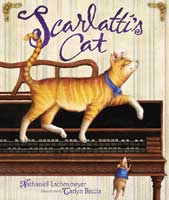
Scarlatti's Cat
Domenico Scarlatti, the great Italian composer, enjoys his cat's company when he plays harpsichord. Little does he know, his cat, Pulcinella also dreams of composing her own music! One day, while chasing a mouse, she tumbles onto the harpsichord. Suddenly, she can't resist the urge to play. When she begin to play, Scarlatti's eyes widen. . .
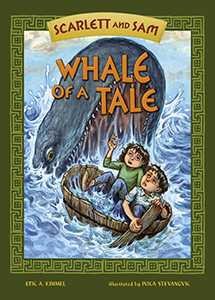
Scarlett and Sam
A close encounter with Grandma Mina's time-traveling carpet sends Scarlett and Sam to ancient Jerusalem, where some very important people need their help. The twins meet the prophet Nathan, the warrior Benayahu ben Yehoiada, and even King Solomon himself, the wisest ruler of all time. But Solomon has a big problem that even his wisdom can't solve. God wants him to build the Temple, but it can't be done without the mythical insect called the shamir. It's up to the twins to find the Shamir-even if that means facing off against the king of the demons.

Scary and Spooky
Scary and Spooky provides a high-interest look at spooky and mysterious places, creatures, events, and stories. Each book examines popular scary topics and provides revealing and engaging information. Interesting facts and photos are guaranteed to fascinate readers.
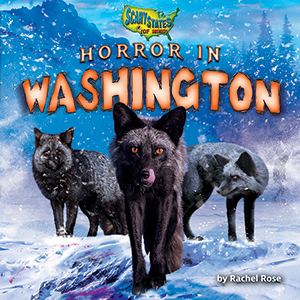
Scary States (of Mind)
Do you think you know all there is to know about the United States? These expertly crafted, bone-chilling stories for beginning readers will test your knowledge! Explore the dark and disturbing histories of York, Georgia, California, and other great states. This series features controlled, narrative nonfiction text with age-appropriate vocabulary and simple sentence construction. The colorful design and spooky art in each 24-page book will transfix emergent readers.
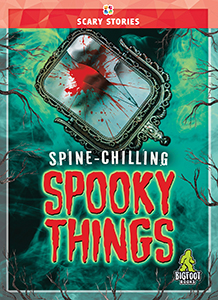
Scary Stories (Bigfoot Books) 
Journey into the darkest corners of the imagination with this collection of spine-chilling stories. From haunted history to creepy places, each tale keeps you on the edge of your seat while providing just the right amount of fright. Get ready for a thrilling ride into the unknown. Enter if you dare!
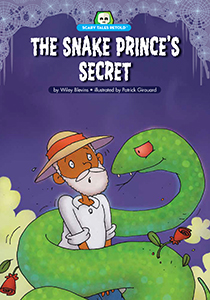
Scary Tales Retold 
Not for Bedtime Reading. These non-traditional fairy tales have been retold for the bravest young readers. Haunted and creepy, each book in the series changes the way you will forever think of these classic tales.
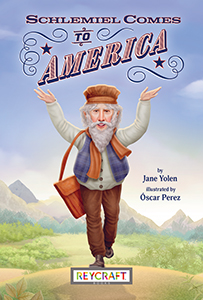
Schlemiel Comes to America
In this twist on the classic Jewish stories, Schlemiel lives in the famous town of Chelm, known as ""the place of fools."" When one day he embarks on a journey to America, he has no idea the people and adventures he will encounter. But what he quickly learns is that ""not all the fools in the world live in Chelm.

Schnitzel: A Cautionary Tale for Lazy Louts
Apprenticed to a famous wizard, young Schnitzel is not known for his hard work. In fact, it's just the opposite. He's lazy and lacks motivation. So late one night, when a door-to-door salesman selling vacuum cleaners offers to help, Schnitzel sees an answer to his housecleaning woes. Little does he know, however, that this is no ordinary salesman and the vacuum is no ordinary dust-buster. In this retelling of the classic tale The Sorcerer's Apprentice, Schnitzel is about to find out why it's never a good idea to invite a cape-wearing, fang-toothed stranger in after dark. Fortunately for him, there's magical help ready to lend a hand.

School Days
There's a lot to do at school! Bright photos of a wide range of young kids and simple text offer young readers a look what happens throughout the school year.
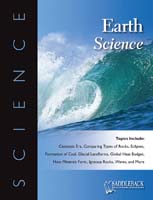
Science (Workbook)
Earth science includes the study of the atmosphere, hydrosphere, oceans, and biosphere, as well as the solid earth. Life science involves the study of living organisms, their organization, life processes, and the characteristics of all living things. And physical science includes any of the sciences that analyze the nature and properties of energy and nonliving matter and seeks to expand the understanding of the universe. The reproducible activity pages supplement science textbooks with stand-alone or coordinate one-page lessons.